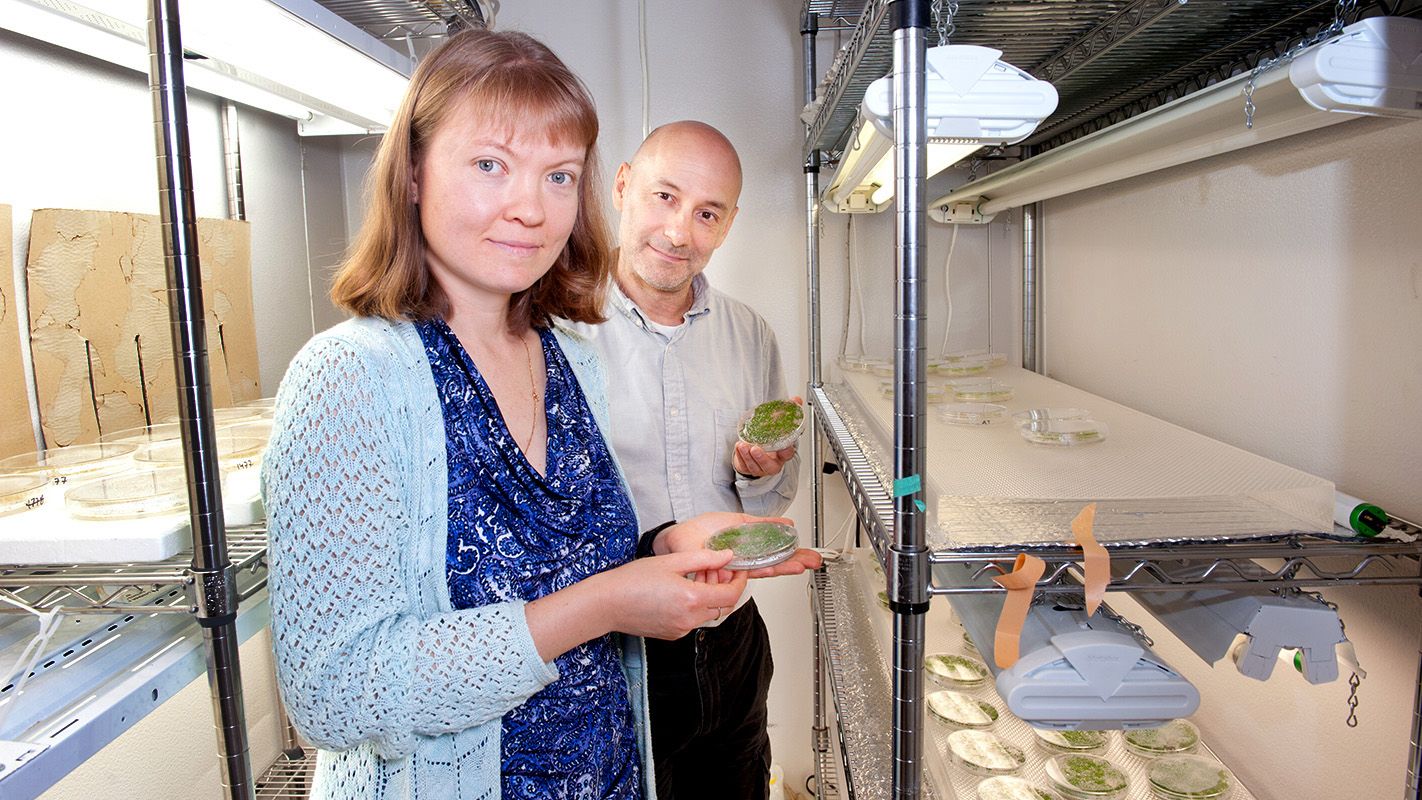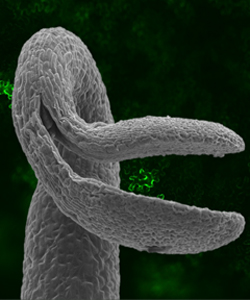
Plants can’t get up and run away when they’re being attacked by insects or harsh weather conditions. So they need mechanisms to rapidly respond to a stressful event – being eaten by a bug, for example – and then quickly transition back to “normal” conditions when the stress level subsides.
In a paper published in the journal Cell, North Carolina State University researchers show how plants handle – at the molecular level – the release of ethylene, an important gaseous stress hormone that, among other functions, regulates plant growth and stimulates the fruit ripening process. The findings could pave the way to new techniques to engineer plants to produce better crops or to turn off certain genes.

In the paper, plant geneticists Anna Stepanova and Jose Alonso show that ethylene triggers a process that begins, but doesn’t complete, one of the cell’s most basic functions – gene expression.
At issue are the plant cell’s transcription and translation processes, in which genetic instructions encoded in DNA are transcribed into messenger RNAs, which are then translated into amino acids to create proteins that carry out specific functions.
The researchers show that, when ethylene is perceived, transcription of certain genes that function as circuit breakers of ethylene signaling occurs, but protein production becomes restricted until ethylene is removed.
“Essentially, that means the messenger RNA is being made and stored, but the flow of information does not continue into protein synthesis,” Stepanova said.
“This is a mechanism for the plant cell to respond very quickly to ethylene but then very rapidly return to normal when the hormone is withdrawn,” Alonso added.
Specifically, the paper shows that a key signaling molecule, EIN2, is an essential component in the ethylene-response process. EIN2 protein binds to the messenger RNA of the ethylene circuit breaker EBF2, incapacitating its protein synthesis, and thus allowing for a full activation of plant ethylene responses.
Alonso and Stepanova say that although the results are specific to ethylene, the findings provide a blueprint for examining other plant hormones and their effects on genes.
NC State post-doctoral researchers Catharina Merchante and Javier Brumos are the paper’s lead authors. Co-authors from NC State include research technician Jeonga Yun, bioinformatics Ph.D. student Qiwen Hu, former undergraduate interns Kristina Spencer and Paul Enriquez, and Dr. Steffen Heber, associate professor of computer science. Dr. Brad Binder from the University of Tennessee also contributed to the study.
The research was funded by the National Science Foundation and NC State.
– kulikowski –
Note to editors: An abstract of the paper follows.
“Gene-specific translation regulation mediated by the hormone-signaling molecule EIN2”
Authors: Catharina Merchante, Javier Brumos, Jeonga Yun, Qiwen Hu, Kristina R. Spencer, Paul Enriquez, Steffen Heber, Anna Stepanova and Jose M. Alonso, North Carolina State University; Brad M. Binder, University of Tennessee
Published: Oct. 22, 2015 in Cell
Abstract: The central role of translation in modulating gene activity has long been recognized, yet the systematic exploration of quantitative changes in translation at a genomewide scale in response to a specific stimulus has only recently become technically feasible. Using the well-characterized signaling pathway of the phytohormone ethylene and plant-optimized genome-wide ribosome footprinting, we have uncovered a molecular mechanism linking this hormone’s perception to the activation of a gene-specific translational control mechanism. Characterization of one of the targets of this translation regulatory machinery, the ethylene signaling component EBF2, indicates that the signaling molecule EIN2 and the nonsensemediated decay proteins UPFs play a central role in this ethylene-induced translational response. Furthermore, the 3’UTR of EBF2 is sufficient to confer translational regulation and required for the proper activation of ethylene responses. These findings represent a mechanistic paradigm of gene-specific regulation of translation in response to a key growth regulator.
This post was originally published in NC State News.